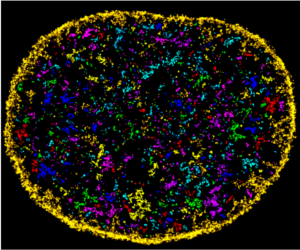by Evan Lerner

The National Science Foundation’s Science and Technology Center (STC) program is its flagship funding mechanism for organizing interdisciplinary research on cutting-edge topics. Penn’s Center for Engineering MechanoBiology (CEMB) is one of the 18 active STCs, bringing together dozens of researchers from Penn Engineering and the Perelman School of Medicine, as well as others spread across campus and at partner institutions around the world.
With its NSF funding now renewed for another five years, the Center is entering into a new phase of its mission, centered on the nascent concept of “mechanointelligence.”
Mechanobiology is the study of the physical forces that govern the behavior of cells and their communication with their neighbors. Mechanointelligence adds another layer of complexity, attempting to understand the forces that allow cells to sense, remember and adapt to their environments.
Ultimately, harnessing these forces would allow researchers to help multicellular organisms — plants, animals and humans — better adapt to their environments as well.
“Mechanointelligence is a key element of a cell’s ability to survive and reproduce,” says CEMB Director and Eduardo D. Glandt President’s Distinguished Professor Vivek Shenoy. “Just like with complex organisms, a cell’s ‘fitness’ depends on its environment, and adapting means rewiring how its genes are expressed.”
Read the full story in Penn Engineering Today.
Vivek Shenoy is Eduardo D. Glandt President’s Distinguished Professor in Materials Science and Engineering, Bioengineering and Mechanical Engineering and Applied Mechanics.
